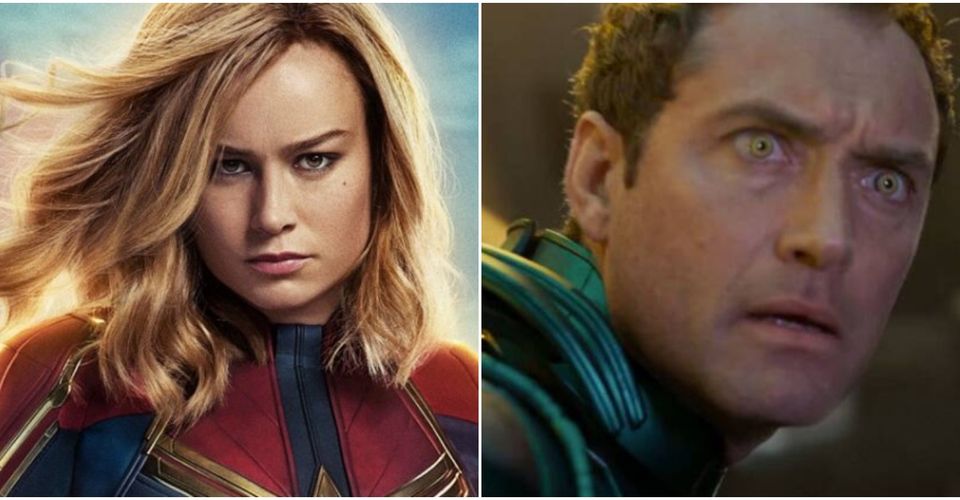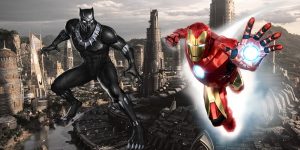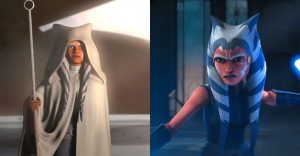Captain Marvel: 5 Things It Got Right (& 5 It Got Wrong)

Well, it took them 11 years, but in 2019, Marvel finally released an MCU solo movie centered around a female superhero. Two years after Wonder Woman had already taken the comic book movie world by storm, Captain Marvel quickly became one of the MCU’s highest-grossing entries, and the first female-starring superhero movie to cross $1 billion at the box office.
When the movie’s sexist detractors became particularly vocal, review-bombing it on Rotten Tomatoes and abusing Brie Larson on social media, its feminist supporters reacted by becoming even more vocal. As a result, Captain Marvel became one of the most talked-about movies in recent memory.
10 Right: Casting Brie Larson As Carol Danvers

By the time Captain Marvel got made on the back end of Phase Three, the MCU had become pretty famous for perfectly casting all its superheroes. Marvel’s go-to casting genius has always been Sarah Finn. She’s responsible for casting everyone from Robert Downey Jr. as Iron Man to Chris Pratt as Star-Lord.
Finn’s casting of Brie Larson as Carol Danvers has provoked the ire of a lot of sexist fanboys, because the actor is just as fierce and empowered in real life as Carol is in the movies, but that’s exactly what makes her the ideal choice for the role.
9 Wrong: Overuse Of Exposition

In superhero spectacles with a lot of worldbuilding to convey, exposition can be a very useful tool. However, in movies like Suicide Squad, the worst kind of exposition is overused.
Unfortunately, with its unsubtle explanations of every plot point, Captain Marvel falls into that category, too. It’s big on tell, short on show.
8 Right: Nonlinear Storyline

Origin stories make for the least rewatchable superhero movies. Where the sequels can dive right into the action, the first movies are forced to hit all the familiar beats of an origin story. But Captain Marvel avoids the trappings of a usual origin story with a nonlinear storyline.
At the beginning of the movie, Carol already has her powers. She’s living with the Kree and can’t remember anything about her past. When the Skrulls poke around in her brain, her backstory begins to reveal itself. Withholding information from the audience made Captain Marvel a lot more engaging than the average superhero origin movie.
7 Wrong: ‘90s Nostalgia

To keep comic book movies fresh in the past decade, a few have been set in historical periods. X-Men: First Class expertly captured the feel of a ‘60s spy movie, while Captain America: The First Avenger was a delightfully pulpy World War II actioner.
The ‘90s setting of Captain Marvel isn’t handled as well as those movies’ historical settings. Like the ‘80s in Bumblebee, Captain Marvel’s portrayal of the ‘90s is driven entirely by nostalgia.
6 Right: The Skrull Twist

Traditionally in the comics, the Skrulls are the bad guys. And in the opening scenes of Captain Marvel, that’s how they’re established. However, around the midpoint, Carol learns that all the anti-Skrull propaganda that the Kree used to brainwash her was full of lies.
In reality, the Skrulls are a race of refugees on the run from the merciless militaristic reign of the Kree Starforce. Not only was this a suitably surprising twist, it gave Captain Marvel an undertone of social commentary that isn’t often found in the MCU.
5 Wrong: On-The-Nose Message

The message of Captain Marvel is great. It’s a rallying cry for young girls everywhere. But it tackles its message in such an incredibly on-the-nose way that it actually works against itself in some spots.
A prime example of this is the flashback in which a sexist male fighter pilot tells Carol, “You’re too emotional; you do know why they call it a cockpit, don’t you?”
4 Right: Seamless De-Aging Effects

The hideous reanimation of Peter Cushing in Rogue One and the uncanny valley Patrick Stewart in the opening of X-Men: The Last Stand are timeless reminders that the art of de-aging (or resurrecting) actors with CGI can go horribly wrong.
But Marvel is leading the way in de-aging. After de-aging actors for the occasional flashback, Captain Marvel went back to the ‘90s with a fully de-aged Nick Fury in a supporting role. The effects are surprisingly seamless. Unlike The Irishman, the effects don’t constantly call attention to the fact that Samuel L. Jackson’s age has been digitally altered.
3 Wrong: Noisy Third-Act Battle

Almost every MCU movie, barring rare exceptions like Captain America: Civil War, culminates in a giant third-act battle. The best ones, like the Battle of New York in The Avengers, gradually raise the stakes, forcing the heroes to face more and more adversity, before paying off the whole movie with a gallant act of heroism.
In Captain Marvel, the final battle is just a big, noisy smash-‘em-up. There’s no reason to care about a space battle when the hero can punch her way through all the enemy spacecraft in a matter of seconds.
2 Right: Goose

Goose steals every scene she’s in. Introduced as an adorable cat but revealed to be a deadly Flerken with an alternate dimension in her mouth, Goose is one of the most fascinating characters in the movie.
Kudos to the filmmakers for keeping Goose’s Flerken species intact from the comics, despite the weirdness, because it suits the tone of this movie (and the whole MCU) perfectly.
1 Wrong: How Nick Fury Lost His Eye

Marvel fans spent over a decade waiting for the story behind Nick Fury’s missing eye. He offered up a tantalizing hint in Captain America: The Winter Soldier when he told Steve Rogers, “The last time I trusted someone, I lost an eye.”
However, in Captain Marvel, it turned out that the person he trusted was Goose the Flerken and he lost his eye by holding the cat too close to his face and getting what seemed like a mild scratch that would heal in no time.
About The Author


















